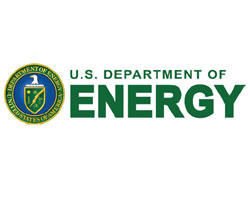
 











|
Signature Sponsor


April 29, 2021 - The U.S. Department of Energy (DOE) today awarded $19 million for 13 projects in traditionally fossil fuel-producing communities across the country to support production of rare earth elements and critical minerals vital to the manufacturing of batteries, magnets, and other components important to the clean energy economy. Facing persistent shortages in domestic supply, the U.S. has been forced to rely on imported materials, leaving clean energy technology production at greater risk of disruption.
“The very same fossil fuel communities that have powered our nation for decades can be at the forefront of the clean energy economy by producing the critical minerals needed to build electric vehicles, wind turbines, and so much more,” said Secretary of Energy Jennifer M. Granholm. “By building clean energy products here at home, we’re securing the supply chain for the innovative solutions needed to reach net-zero carbon emissions by 2050 – all while creating good-paying jobs in all parts of America.”
Production of rare earth elements and critical minerals, which serve as key components to several clean energy applications such as magnets in wind turbines and batteries in electric and conventional vehicles, is a prime example of how DOE is supporting regional economic growth and job creation in regions traditionally home to the fossil fuel industry.
These funding awards align with last week’s recommendations of the White House Interagency Working Group on Coal and Power Plant Communities and Economic Revitalization, which outlined a national roadmap to partner with local communities to ensure that the shift to a clean energy economy creates good-paying union jobs, spurs economic revitalization, and supports workers.
“The coal industry downturn has left many West Virginians without the good-paying jobs they once relied on, which has negatively impacted our state economy. I am pleased that DOE is investing in West Virginia University’s Mid-Appalachian Carbon Ore, Rare Earth and Critical Minerals Initiative, which will work to expand and transition coal resources to other high-value products,” said U.S. Senator Joe Manchin, Chairman of the Senate Energy and Natural Resources Committee. “Not only will this project create innovative solutions for a cleaner energy future, but it will also spur economic growth and create good-paying jobs in the Mountain State. As Chairman of the Senate Energy and Natural Resources Committee, I will continue to advocate for funding and resources to support research projects in West Virginia and across the United States that help our coal communities.”
“I commend Penn State for its work to receive this grant,” said U.S. Senator Bob Casey. “Penn State’s world class research is a source of pride in the Commonwealth. Once again, its students and community of scholars has distinguished itself in the clean energy field. I have no doubt that this research will contribute to our nation’s development of clean energy.”
“I am pleased Virginia Tech’s Center for Coal and Energy Research will receive federal funding to advance their research of natural resources found right here in the Commonwealth and help discover innovative uses for these resources,” said U.S. Senator Mark Warner. “This project will not only increase environmental sustainability in our communities, it will also help boost economic and job opportunity in the region.”
“North Dakota provides a vast array of critical resources for the United States,” said U.S. Senator John Hoeven. “This grant will support the University of North Dakota’s Energy & Environmental Research Center’s efforts to continue advancing the production of rare-earth elements, critical minerals and other carbon products from North Dakota lignite coal. This is vital as we continue adding value to our abundant lignite coal resources, enhancing domestic production to reduce reliance on foreign imports and supporting economic growth across the region.”
“West Virginia has a great opportunity to become a leader in rare earth element and critical mineral production. With a focus on new technology, we can extract elements essential to manufacturing, technology, and energy production from acid mine drainage in our communities. Efforts like this will help revitalize localities in our state, while also cleaning up abandon mine sites. Last year, I authored language in the National Defense Authorization Act to encourage the Department of Defense to submit a report to Congress on the domestic supply chain and expansion of stockpiling these elements, and I’m thrilled to see WVU become the recipient of additional funding. I have also helped introduce legislation to improve the quality and timeliness of critical mineral production permitting on federal land. Taking advantage of this opportunity is vital to the future of West Virginia. I’m confident that WVU will continue to expand our understanding and operations in the field of rare earth element and critical mineral extraction,” said U.S. Senator Shelley Moore Capito.
“China’s near monopoly over rare earth metals makes the rest of the world dependent on them. With this funding, Utah will continue to play a vital role in United States’ production of rare earth metals and critical minerals, which will help rebuild our supply chain and decrease our dependence on China. Importantly, these projects will also create new jobs and spur economic growth for communities in the Uintah Basin,” said U.S. Senator Mitt Romney.
“The work at the Virginia Center for Coal and Energy Research has led to exciting breakthroughs in tapping sources of the rare earth minerals so integral to modern technology, used in everything from advanced batteries to smartphones,” said U.S. Representative Morgan Griffith. “DOE’s award advances research that could support jobs in Appalachia and shore up supply chains vital to our country’s security and economic growth.”
Selected projects fall under 12 areas of interest, corresponding to the selected U.S. basins that have the potential to produce rare earth elements and critical minerals.
Read more here. |
 










|